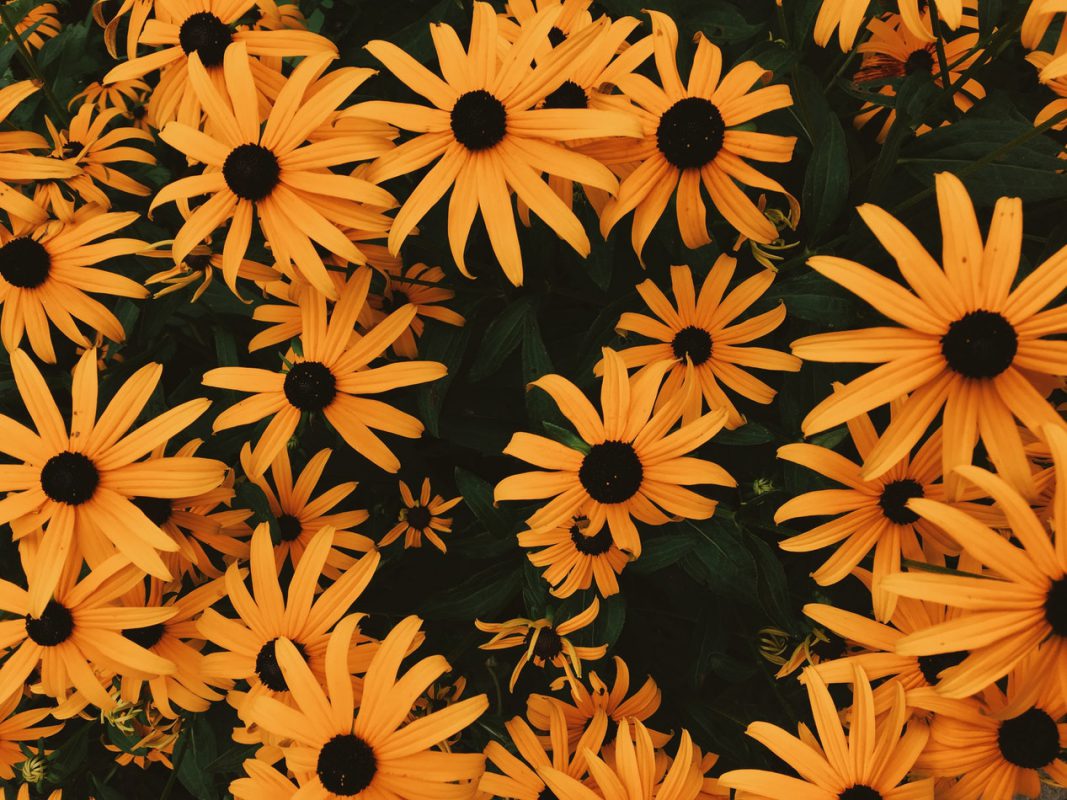We have picked the top 10 Flowers to Plant for Mother’s Day. The list is made up of mostly perennials, but you’ll find a couple of must-have annuals too. Experimenting with new plants is a must in the gardening world, but so is anchoring the site with perennials so tough you couldn’t kill them with a backhoe. Here are 10 true toughies to get you started, which probably include some you haven’t tried but should.
You don’t have to sacrifice beauty or seasonal colors either. Plan your garden to use these as perpetual accents from spring through fall.
1. Purple Coneflower (Echinacea purpurea) This one touches all the gardening bases: showy, native, durable, full sun, drought-tolerant, and soil-tolerant. It’s great in purple-pink masses as well as being reverent, thrifty, brave, and easily divided.
2. Black-eyed Susan (Rudbeckia hirta) There are actually many cultivars of black-eyed Susans, with ‘Goldsturm’ being the one most popular, if not indestructible. Black-eyed Susan is a perennial that takes heat, humidity, dry soil, and endless amounts of compliments about its versatility. It comes in colors from yellow to orange, and butterflies love it, too.
3. Amsonia ‘Hubrictii’ This is a fabulous, little-used, three-season perennial with blue flowers in the spring, and light, airy foliage in the summer that turns golden yellow in the fall. It will grow in beautiful 4-foot bunches. It requires full sun and low maintenance.
4. Epimedium This low-growing, ground-covering wonder is too often condemned to dry shade because it will do well there. But this perennial will also take some morning sunshine and those growing directly beneath our downspout look fabulous—with good drainage being key. It blooms in early spring in yellows, reds, and pinks. Try ‘Lilafee,’ an exquisite, violet-flowering dwarf cultivar.
5. Zinnia By now, it seems as if there are 1.5 million cultivars of annual zinnias, most of which produce great bursts of colorful flowers in full sun and grow from 18 inches to 5 feet tall. It is said that zinnias—with some truth—are late-summer mildew magnets, yet worth all that while in full bloom; ours were sensational for months last year. The toughest of the tough are the zinnia angustifolia, which take full sun, drought, and dry soil worthy of camels.
6. The “H” Plants: Hellebores (Helleborus), Heuchera, Helianthus, Helenium Taken in seasonal order, there’s just something about the letter “H” that produces tough plants. Leafy hellebores—a perennial that likes part to full shade—offer very early spring colors, a welcome sight.
Heuchera—there are dozens of cultivars for this perennial—are an absolute must with their exquisite flowers and enduring foliage of a dozen colors in shade to part sun. Helianthus, or sunflowers, now come in many useful sizes and colors and look great in the mid-to-late-summer garden.
Helenium is a bright, late summer blooming perennial that needs moist soils; we planted our happy plants below a downspout.
7. Turtlehead (Chelone) The aptly named ‘Turtlehead”—and its flowers do resemble its namesake—comes in pink, whites, and pale red, and does very well in mid-to-late summer in moist areas in sun to part shade. This perennial forms big but noninvasive clumps and it’s always fun to hold up a flower and ask a guest: “Hey, what does this look like?”
8. Bellflower (Campanula) Another perennial that seems to produce a new cultivar a week, the bellflower always rings true with gardeners who need blue in the garden. It likes full sun to part shade, and will often form large clumps that will need dividing. It’s great in rock gardens, woodlands, or as a frothy-blue treat in a container.
9. Shasta Daisy (Leucanthemum superbum)It’s impossible to keep Shasta daisies off any list of tough plants going back to Luther Burbank, who created the first ‘Superbum” hybrid back in the 1890s. This perennial makes great cut flowers, loves full sun, and adds some history to the garden.
10. Sedum A plant that adores hot, dry areas and containers, they can now be found in stunning colors, various sizes, and incredible diversity. To sedum is to believe in them.
source: Kentucky Living

